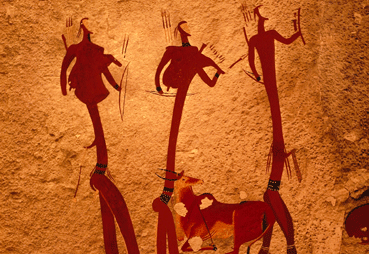
 |
 |
 |
 |
 |
 |
 |
 |
 |

Early days Modern humans have lived in what is today South Africa for over 100 000 years, and their ancestors for some 3,3 million years. One site which is particularly rich in fossil remains, the area around the Sterkfontein Caves near Johannesburg, is justifiably called the Cradle of Humankind. More recent evidence of early man is the many vivid rock paintings which were created by small bands of Stone Age hunter-gatherers, the ancestors of the Khoekhoen and San. Some 2,000 years ago, the Khoekhoen (the Hottentots of early European terminology) were pastoralists who had settled mostly along the coast, while the San (the Bushmen) were hunter-gatherers spread across the region. Both were resident in the southern tip of the continent for thousands of years before its written history began with the arrival of European seafarers. At this time, Bantu-speaking agro-pastoralists began arriving in southern Africa, spreading from the eastern lowlands to the Highveld. At several archaeological sites there is evidence of sophisticated political and material cultures. The Thulamela site in the northern Kruger National Park is estimated to have been first occupied in the 13th century. The ruins of Mapungubwe, where artefacts from as far away as China have been found, are the remains of a large trading settlement thought to stretch back to the 12th century. Agro-pastoralists, these people brought with them an Iron Age culture and sophisticated socio-political systems. (* Source : Pocket Guide to South Africa 2004) |
|||||||||

